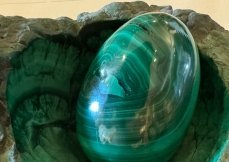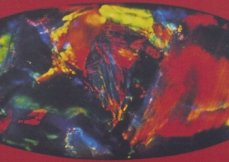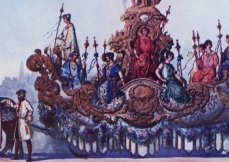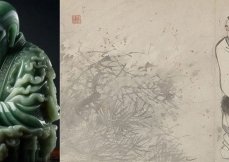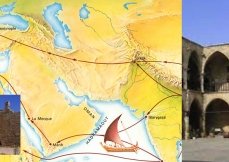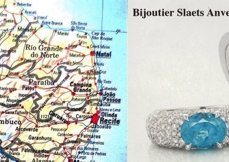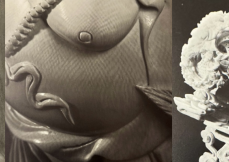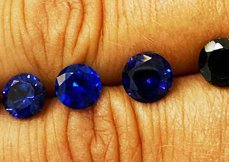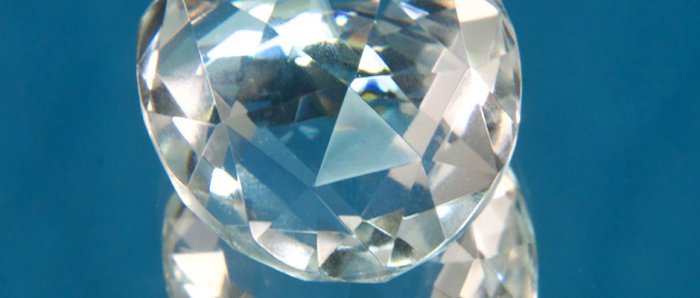
The Sancy | EN
Opinions differ as far as the origin of the stone is concerned. According to some it was bought by the ambassador of France, Sancy, in 1570 in Constantinople for FF 600,000. A thorough investigation, however, neutralizes this thesis because at that time the ambassador of France in Turkey was the son of Nicolas Harlay de Sancy, Achille Harlay de Sancy a prelate extradited by the Sultan because of his abuse of power.
Another version is much more credible. The stone, of Indian origin, appeared for the first time in Bruges in 1476, where it had been polished according to the newest techniques by Lode van Berckem for Charles the Bold. It was one of the first pear shaped stones with symmetrical facets.
The Duke of Burgundy had it set on his helmet or in a ring, depending on the source of information. The Duke died a year later during the battle of Granson near Nancy. The gems were stolen by Swiss farmers who in order to make sure that they were diamonds, used an adequate method. They simply smashed the stones u with a hammer (see Pline the old Historia Naturalis, book 37/57 from 70). Miraculously the Sancy escaped destruction. The stone got lost for a while but reappeared in 1589 among the jewels of the King of Portugal. He had to flee to France because of Philip II of Spain. He gave the diamond as collateral to Count Nicolas Harley de Sancy, who eventually bought it for £ 100.000. The Count was a monarchist, faithful to Henry III. When Henry III asked for financial help to raise troops, Harley de Sancy wanted to pawn the stone. He sent his most faithful valet to fetch the stone. The latter declared: "I would rather die than have the stone taken away from me!". When the Duke did not receive any message from his valet, he ordered an investigation.
In the vicinity of the Dole forest the body of a man was found, killed by highwaymen. He was carefully buried by the local priest. Remembering the last words of his servant, the Duke had the corpse excavated. An autopsy revealed the presence of the stone in the stomach of the victim. He valet had kept his promise. The stone was eventually pawned to help the King. Finally it was sold to King James I of England, who had parliament, the revolution and especially Cromwell to worry about. The Queen fled to the Continent with the crown jewels which she pawned to help her husband. He was beheaded in 1649 and the Queen was forced to sell the stones, including the Sancy, a few years later in order to pay her debts.
The Sancy ended up with Cardinal Mazarin, who bequeathed it to King Louis XIV. He wore the stone in his crown on the day of his coronation.
The stone disappeared during the robbery of the Garde Meuble on September 17, 1792. The diamond was recovered in a mysterious way and ended up with Napoleon I who sold it to an unknown person. Henri Jacobs states that it was found back among the jewels of the Spanish Queen who gave it to Godoy, the "prince of peace" when he returned to France in 1828.
It was bought for FF 625,000 by Prince Demidoff who in 1864 sold it to an Indian Prince for USS 100,000. In 1867 the stone was offered for sale through the Parisian dealer Oulmann for FF 1,000,000.
This price was too high and so the diamond returned to its owner, the Maharajah of Cuttrala in Bombay. The billionaire William Waldorf Astor bought the stone in 1906 and declared he was the sole owner of the historical stone. The Maharajah claimed the same. These two stones can easily be con fused: they have the same shape, but their weight is different (55 and 60.40 carats). In 1978 the Sancy was bought by the French state from Lord Astor and thus joined the collection of the French patrimony which il had left two centuries ago. At present the stone is displayed in the Apollo Gallery of the Louvre.
Tie "little Sancy" also called "beaun Sancy" is a stone of 34 carats. Il also belonged to the Count of Sancy and was bought by the Prince of Orange in 1647. Later it belonged to his grandson, Frederick I of Prussia. It was last seen in Berlin in 1881 in a royal necklace at the wedding of princess Mary of Saxe- Altenburg and Prince Albert of Prussia.
|

